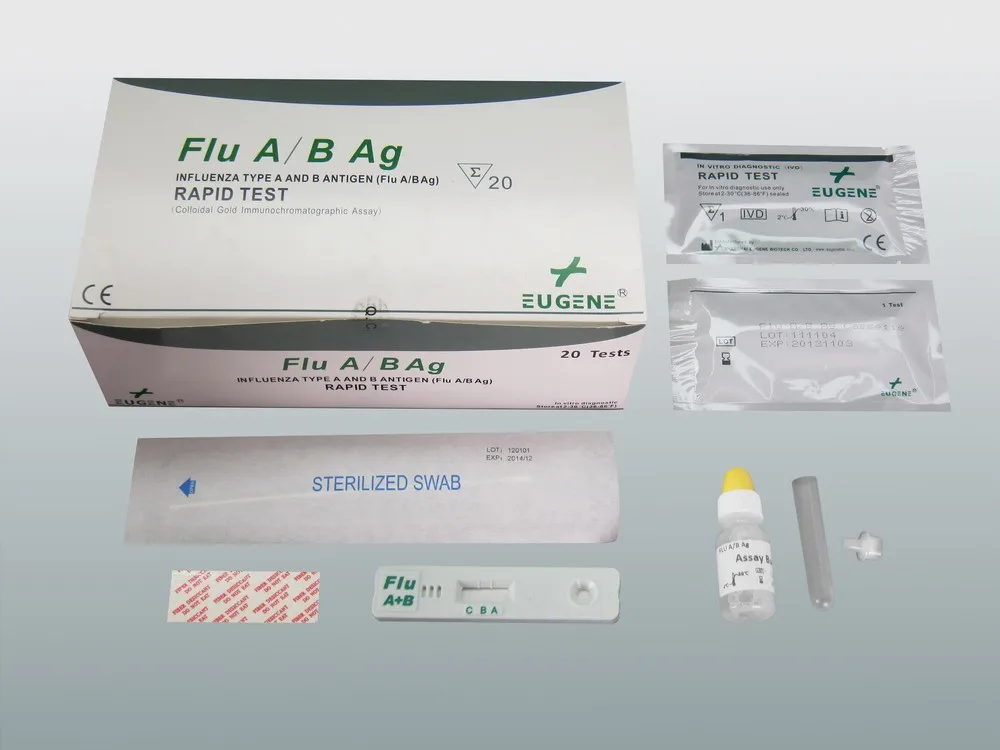
However, negative RIDT results do not exclude influenza virus infection as a cause of a respiratory outbreak because of the limited sensitivity of these tests. Positive RIDT results from one or more ill persons with suspected influenza can support decisions to promptly implement infection prevention and control measures for influenza outbreaks. RIDTs can be useful to identify influenza virus infection as a cause of respiratory outbreaks in any setting, but especially in institutions (i.e., nursing homes, chronic care facilities, and hospitals), cruise ships, summer camps, schools, etc. Top of Page Use of RIDTs for Public Health Purposes to Detect Influenza Outbreaks Once influenza activity has been documented in the community or geographic area, a clinical diagnosis of influenza can be made for outpatients with signs and symptoms consistent with suspected influenza, especially during periods of peak influenza activity in the community. Testing is not needed for all patients with signs and symptoms of influenza to make antiviral treatment decisions (See Figures 1-4). More information about Antiviral Drugs and recommendations on their use. Therefore, if clinically indicated, antiviral treatment should not be withheld from patients with suspected influenza, even if they test negative by RIDT, and further influenza testing of respiratory specimens by molecular assays may be indicated. However, due to the limited sensitivities, negative results of RIDTs do not exclude influenza virus infection in patients with signs and symptoms suggestive of influenza. RIDTs may be used to help with diagnostic and treatment decisions for patients in clinical settings, such as whether to prescribe antiviral medications. Top of Page Use of RIDTs in Clinical Decision-making RIDTs cannot distinguish between seasonal influenza A virus infection and novel influenza A virus infection (due to infection with avian or variant influenza A viruses). RIDTs that provide results on the type of influenza virus (e.g., influenza A or B virus), do not provide information on influenza A virus subtype or specific virus strain information (e.g., degree of similarity to vaccine strains). Some RIDTs distinguish between influenza A or B viruses while others do not.Although specificity is high, false positive results can also occur, especially during times when influenza activity is low.Sensitivity of RIDTs to detect influenza B viral antigens is lower than for detection of influenza A viral antigens.Sub-optimal test sensitivity, false negative results are common, especially when influenza activity is high.RIDTs that have been CLIA waived can be used in settings that include point-of-care. Some RIDTs are cleared for office/bedside use.Produce quick result in less than approximately 15 minutes, simple to perform.Advantages and Disadvantages of RIDTs Advantages See Guidance for Clinicians on the Use of RT-PCR and Other Molecular Assays for Diagnosis of Influenza Virus Infection for more information. Some RIDTs use analyzer reader devices to standardize result interpretation.ġ RIDTs do not include rapid molecular assays that have higher sensitivity to detect influenza viruses in respiratory specimens compared to RIDTs. However, RIDTs have limited sensitivity to detect influenza viruses in respiratory specimens compared to RT-PCR or viral culture and negative RIDT test results should be interpreted with caution given the potential for false negative results, especially during peak influenza activity in a community. RIDTs can yield results in a clinically relevant time frame, i.e., less than approximately 15 minutes.


(See “ Table 1: Influenza Virus Testing Methods” and “ Table 2: Characteristics of Rapid Influenza Diagnostic Tests”.) The reference standards for laboratory confirmation of influenza virus infection in respiratory specimens are reverse transcription-polymerase chain reaction (RT-PCR) or viral culture. In the United States, a number of RIDTs are commercially available. Rapid influenza diagnostic tests (RIDTs) are immunoassays that can identify the presence of influenza A and B viral nucleoprotein antigens in respiratory specimens, and display the result in a qualitative way (positive vs. When to Consider Further Influenza Testing.



 0 kommentar(er)
0 kommentar(er)
